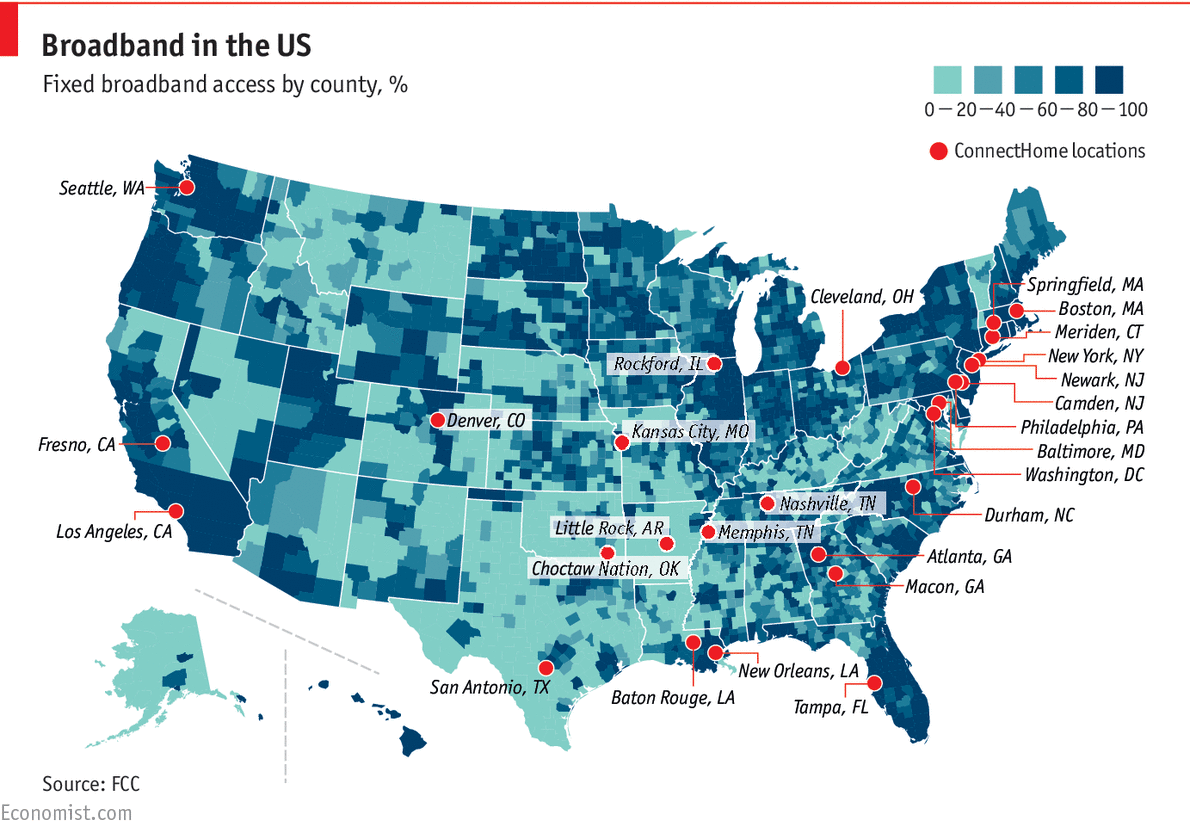From The Economist:
The program, called “ConnectHome”, is a partnership between government, tech companies and non-profit organisations that will provide low-cost broadband internet, digital literacy programs and other resources to 275,000 public-housing developments in 28 locations across the country.

Source: The Economist


odd as i recall, the parts of CA east of LA, are basically desert. but the maps shows 100% coverage
but it does look right down here in Tejas. as once you get out of the major metro areas, broad band access becomes far more harder to come by
That map for Marin and Sonoma Counties in Northern Ca. is not accurate at all. The vast majority of the northwestern parts of those counties- as much as 1/3 to 1/2 of the total area doesn’t have broadband at all. When I lived in that area I had to have a tree guy climb 120ft up a redwood tree on my property to put up a directional antennae to catch a signal several miles across a valley. It still wasn’t broadband but was much faster than dial up.
I wish I could get free internet. I can’t even get reliable pay internet. Glad my tax dollars are going for getting someone else internet access instead of me. Hope the net doesn’t go down before I post.
what makes you think they get more reliable internet? its likely its the same company, only putting out a much slower version.
As noted the map is by county, which in some sense is the wrong entity to use. for example All of San Bernadino County Ca is one unit, as is Riverside county, both of which include a lot of empty space (San Bernadino co runs to Colorado River as well as NV, Riverside County runs from Riverside to the Colorado also.
A more cogent issue is that the rural areas of the west are skipped. Of course some of these have population densities of under 4 per square mile which suggest satellite based internet, although in a lot of these areas there is a lot of TV whitespace because of no TV stations which could be used for terrestrial wireless.
Sort of coincides with the low-information voters cherished by the Republicans.